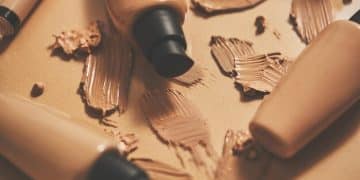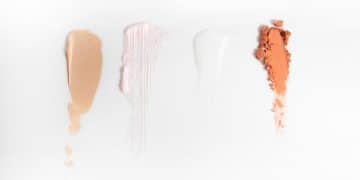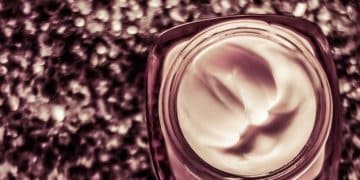Makeup Primers: Your Guide to Achieving Flawless Skin
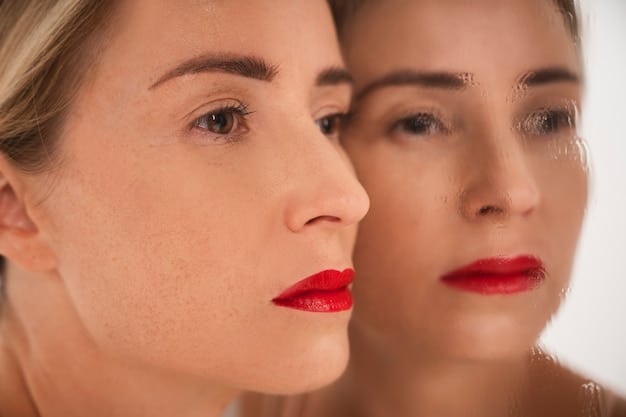
Makeup primers are essential for achieving flawless skin by creating a smooth base, prolonging makeup wear, and targeting specific skin concerns like oiliness, dryness, and redness.
Achieving a flawless makeup look starts before you even apply foundation. The secret? **Makeup primers** are the unsung heroes of the beauty world, designed to prep your skin for a smooth, long-lasting finish. Let’s dive into how to choose and use them effectively.
What is Makeup Primer and Why Use It?
Makeup primer is a base product applied after skincare but before makeup. Its primary purpose is to create a smooth canvas for makeup application. But why is it so important?
Creates a Smooth Base
Primers fill in fine lines, pores, and imperfections, resulting in an even surface. This smoothness prevents makeup from settling into these areas, ensuring a flawless appearance.
Prolongs Makeup Wear
By creating a barrier between your skin and makeup, primers prevent oils from breaking down your foundation, concealer, and other products. This barrier helps your makeup stay put for longer, reducing the need for touch-ups.
Targets Specific Skin Concerns
Primers aren’t just for creating a smooth base; they also address various skin concerns. Whether you have oily, dry, or sensitive skin, there’s a primer formulated to meet your needs.
- Oily Skin: Look for mattifying primers.
- Dry Skin: Hydrating primers are your best bet.
- Redness: Color-correcting primers can neutralize redness.
Ultimately, makeup primers are versatile products that improve both the appearance and longevity of your makeup. They ensure that your makeup looks better and lasts longer, making them an essential step in any routine.
Types of Makeup Primers
With so many primers available, understanding the different types and their specific benefits is crucial. Here are some common types of makeup primers:
Silicone-Based Primers
Silicone-based primers create a silky-smooth texture and are excellent at filling in pores and fine lines. They provide a smooth canvas for makeup application, helping foundation glide on effortlessly.
Water-Based Primers
Water-based primers hydrate the skin and are ideal for those with dry or dehydrated skin. They tend to be lightweight and non-greasy, making them a good option for daily use.
Mattifying Primers
Designed for oily skin, mattifying primers control shine and oil production throughout the day. They often contain ingredients like silica or charcoal to absorb excess oil.
Hydrating Primers
Hydrating primers infuse moisture into the skin, preventing makeup from looking cakey or dry. They often contain ingredients like hyaluronic acid or glycerin to keep the skin hydrated.
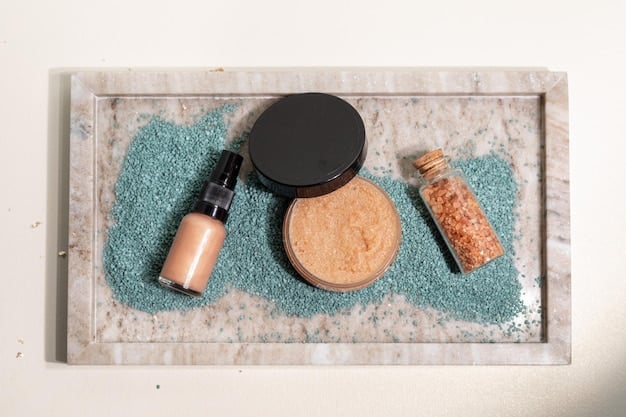
Understanding the different types of makeup primers allows you to choose the one that best suits your skin type and makeup goals. Whether you need to control oil, boost hydration, or simply create a smooth base, there’s a primer that’s perfect for you.
How to Choose the Right Primer for Your Skin Type
Selecting the right primer starts with understanding your skin type. Here’s a guide to help you make the best choice:
For Oily Skin
If you have oily skin, opt for mattifying primers. These primers help control oil production and keep your makeup looking fresh throughout the day. Look for ingredients like silica or charcoal, which absorb excess oil.
For Dry Skin
Dry skin needs hydration, so choose hydrating primers. These primers often contain ingredients like hyaluronic acid or glycerin that lock in moisture and prevent your makeup from looking cakey.
For Combination Skin
Combination skin can be tricky. Focus on using a primer that balances hydration and oil control. Water-based primers are often a good choice as they provide hydration without being too heavy.
For Sensitive Skin
If you have sensitive skin, choose primers that are fragrance-free, hypoallergenic, and non-comedogenic. Look for soothing ingredients like aloe vera or chamomile to minimize irritation.
Choosing the right primer for your skin type ensures that your makeup not only looks great but also helps maintain the health and balance of your skin. By understanding your skin’s needs, you can select a primer that enhances your makeup and supports your skin’s natural functions.
Step-by-Step Guide to Applying Makeup Primer
Applying makeup primer correctly is essential for achieving the best results. Here’s a step-by-step guide:
Step 1: Cleanse and Moisturize
Start with a clean, moisturized face. Cleansing removes dirt and oil, while moisturizing hydrates the skin, creating a smooth base for the primer.
Step 2: Apply a Small Amount of Primer
Squeeze a small, pea-sized amount of primer onto your fingertips. A little goes a long way, so avoid using too much product.
Step 3: Gently Spread the Primer
Gently spread the primer over your face, focusing on areas with visible pores, fine lines, or uneven texture. Use upward and outward motions for even distribution.
Step 4: Let It Set
Allow the primer to set for a minute or two before applying foundation. This setting time allows the primer to properly adhere to the skin and create a smooth canvas.
- Focus on Problem Areas: Pay extra attention to areas like the T-zone and around the nose.
- Don’t Over Apply: Using too much primer can cause your makeup to slip.
- Use the Right Tools: Some prefer using a brush or sponge for application.
Following these steps ensures that your makeup primer works effectively, creating a flawless base that enhances the look and longevity of your makeup. Proper application makes a significant difference in the final result.
Key Ingredients to Look for in a Makeup Primer
The ingredients in your makeup primer can significantly impact its performance and benefits. Here are some key ingredients to look for:
Hyaluronic Acid
Hyaluronic acid is a powerful humectant that attracts and retains moisture. It’s perfect for hydrating primers, helping to keep the skin plump and dewy.
Silica
Silica is a mineral that absorbs excess oil and creates a mattifying effect. It’s commonly found in primers designed for oily skin.
Antioxidants (Vitamin C, E)
Antioxidants protect the skin from environmental damage and promote a healthy complexion. They can also brighten and even out skin tone.
Peptides
Peptides are amino acids that help boost collagen production, reducing the appearance of fine lines and wrinkles. They contribute to smoother and firmer skin.
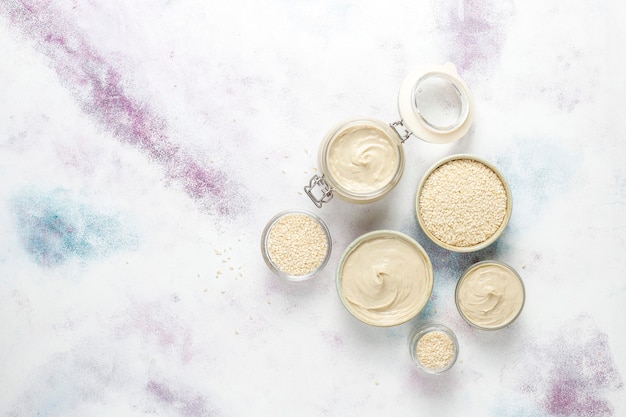
Understanding the function of key ingredients in makeup primers allows you to choose products that deliver the specific benefits you’re looking for. Whether it’s hydration, oil control, or anti-aging effects, the right ingredients can make all the difference.
Common Mistakes to Avoid When Using Makeup Primer
Even with the best primer, common application mistakes can hinder its effectiveness. Here are some pitfalls to avoid:
Using Too Much Primer
Applying too much primer can cause your makeup to slip and slide, rather than create a smooth base. A pea-sized amount is usually sufficient for the entire face.
Skipping Skincare
Primer is not a substitute for proper skincare. Always cleanse and moisturize your skin before applying primer to ensure a hydrated and healthy base.
Not Letting Primer Set
Rushing to apply makeup immediately after primer can prevent it from properly adhering to the skin. Allow a minute or two for the primer to set.
Ignoring Your Skin Type
Using the wrong type of primer for your skin type can lead to issues like breakouts or dryness. Choose a primer that addresses your specific skin concerns.
- Incorrect Application Technique: Ensure even application.
- Using Expired Products: Check expiration dates.
- Mixing Incompatible Formulas: Be mindful of ingredient interactions.
Avoiding these common mistakes ensures that your makeup primer works effectively, creating a flawless base that enhances the look and longevity of your makeup. Proper application and product selection are key to achieving the best results.
| Key Point | Brief Description |
|---|---|
| ✨ Smooth Base | Primers fill pores and lines for even makeup application. |
| ⏳ Prolonged Wear | Creates a barrier to keep makeup lasting longer. |
| 💧 Hydration | Hydrating primers prevent cakey makeup. |
| 🌿 Oil Control | Mattifying primers absorb excess oil for a fresh look. |
FAQ
▼
The main purpose of a makeup primer is to create a smooth base for makeup application, ensuring it lasts longer and looks flawless by filling in pores and fine lines.
▼
Choose a primer based on your skin type: mattifying for oily skin, hydrating for dry skin, water-based for combination skin, and fragrance-free and hypoallergenic for sensitive skin.
▼
Yes, you can use makeup primer every day as long as you choose a formula that suits your skin type and ensure you are cleansing and moisturizing your skin properly beforehand.
▼
Avoid using too much primer, skipping skincare, not letting the primer set properly, and ignoring your skin type. These mistakes can hinder the primer’s effectiveness.
▼
Silicone-based primers are not necessarily bad but can clog pores for some. Ensure thorough cleansing to prevent issues, and opt for non-comedogenic options if you’re prone to breakouts.
Conclusion
Incorporating makeup primer into your beauty routine can transform your makeup’s appearance and longevity. By understanding your skin type, selecting the right primer, and applying it correctly, you can achieve a flawless, long-lasting finish every time.
